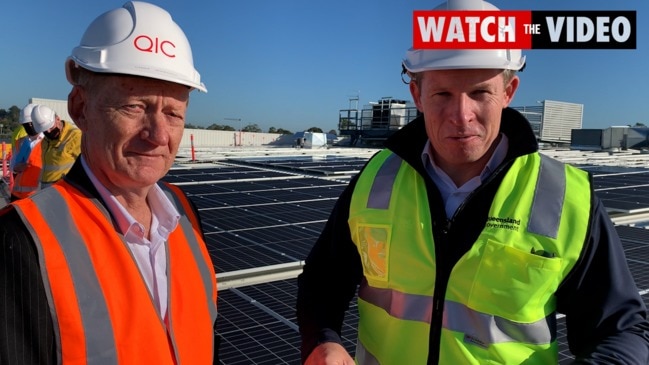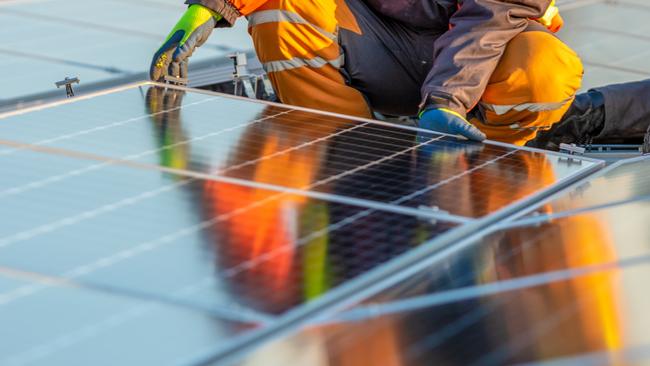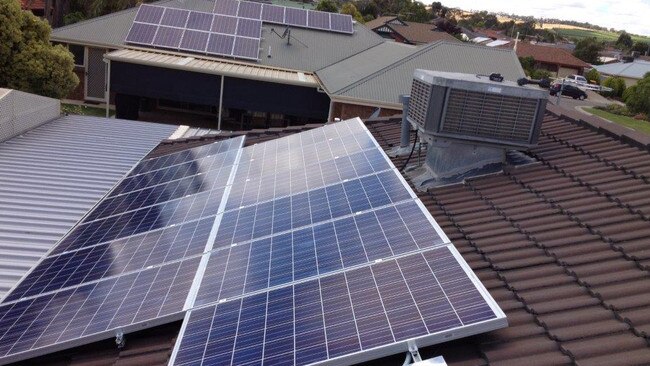Energy grid future-proofing set to cut bills for millions while making better use of household solar
A move to change the way we use energy and cut power bills has been criticised as a tax on those who have switched to solar.

Victoria
Don't miss out on the headlines from Victoria. Followed categories will be added to My News.
Millions of non-solar households stand to save $15 a year on bills under sweeping reforms to the way our energy grid is managed.
But the plan has incensed some renewables advocates who say it introduces a new “sun tax”.
The reforms will force network businesses — which manage the poles and wires that deliver electricity to our homes — to adapt to an explosion of rooftop solar systems around the country.
Businesses that allow more power from small-scale solar to be used, rather than simply blocking it from the grid during peak times of production, would be rewarded.
This would lead to incentives for solar households that can use their own energy in the middle of the day when the sun is shining, rather than export it to a congested network.

Households that could store energy in batteries and feed it into the grid when it is needed — such as summer evenings when people turn on airconditioners at home — would also reap rewards.
But the changes allow the networks for the first time to charge solar customers for upgrades needed to deal with congestion, rather than all households.
This is likely to reduce the money that solar customers make from feed-in tariffs.
The group Solar Citizens said it would “penalise households for sharing their clean solar energy” and could discourage greater uptake of panels.
Ellen Roberts, Solar Citizens’ national director, said Victorian Energy Minister Lily D’Ambrosio could refuse to implement the rules.
“We know that Australia’s solar homes and businesses are not only driving down electricity bills but also playing a major role in slashing Australia’s emissions,” Ms Roberts said.
But the Australian Energy Market Commission said solar households would still remain better off under the plan, with money a 4-6 kilowatt system only reducing from $970 to $900.
Modelling for the Australian Energy Market Commission shows non-solar customers would avoid paying for upgrades that benefit solar homes, with $15 a year saved once changes are introduced in 2025.

Social services groups called for changes after arguing that households that can’t afford solar or who rent are subsidising network upgrades for people who can afford rooftop panels and make money off their investment.
Vinnies policy manager Gavin Dufty said the change was a “fair energy platform for the future — one that doesn’t privilege one appliance above another”.
Australian Energy Market Commission chair Anna Collyer said Australia had the fastest rate of solar uptake in the world but its grid was still geared towards one-way traffic.
Reforms would create a “two-way super highway” to better use renewable energy created at home and work.
“Getting this right means adapting the grid to handle more solar in a smart way that keeps
costs down, keeps significant financial benefits for those who choose to go solar and saves
money on electricity bills for those who don’t or can’t,” Ms Collyer said.
The rule changes on energy export charges, which begins in 2025, would incentivise home energy storage through batteries that are expected to boom once costs fall.
Ms Collyer said electric vehicle batteries were a great resource that could release energy at times of need, and then charge overnight on timers.
She said while this wasn’t the driving motivation for owners at the moment, innovators were creating “set and forget” systems that allow people to save money simply by adopting smart technology.
“We don’t want to see solar going to waste. That costs everyone more because less cheap renewable energy gets into the system,” she said.
The AEMC expects 80 per cent of customers to have bill reductions once reforms begin, while networks must offer a “free plan” to small-scale solar customers.





